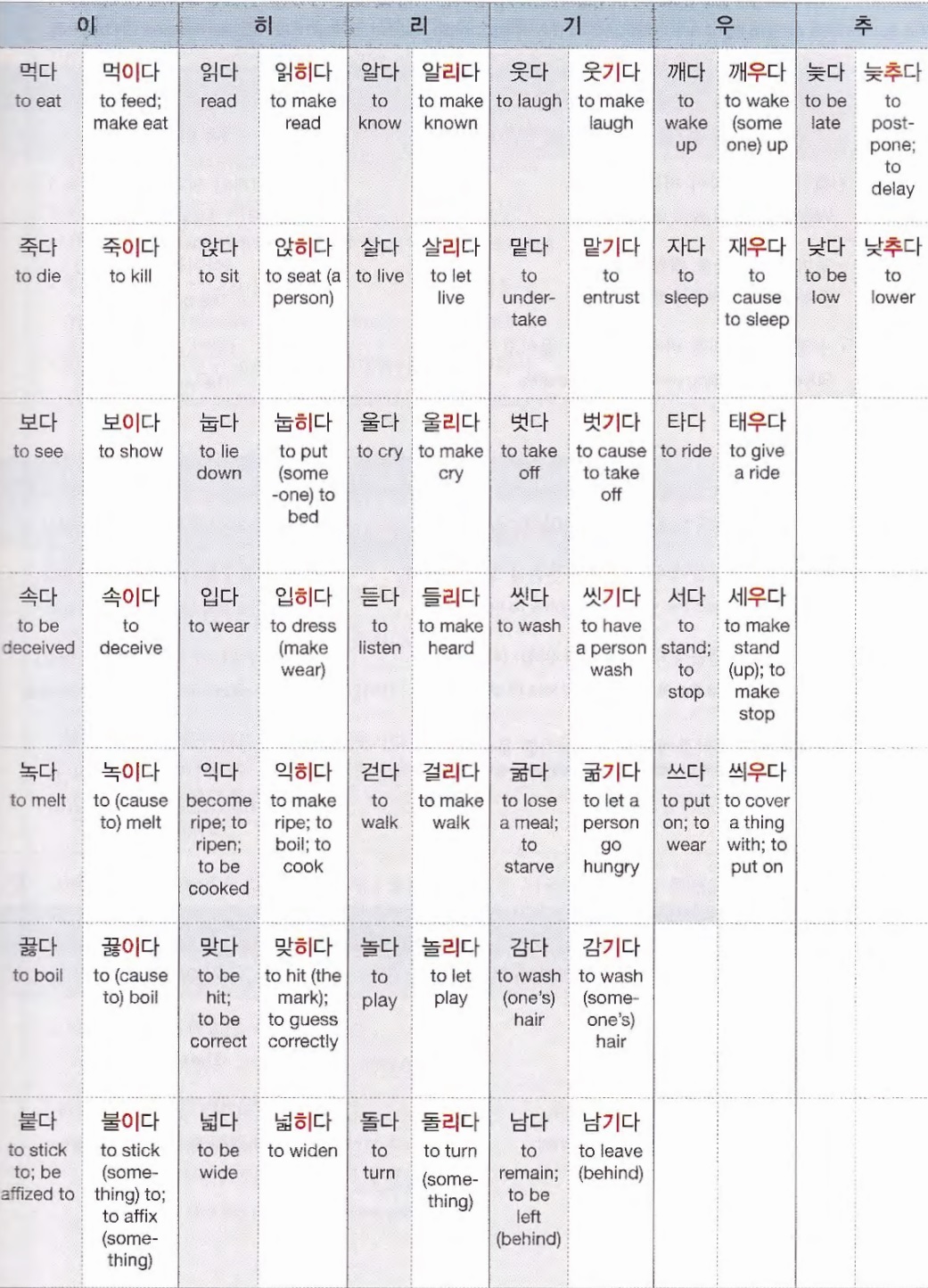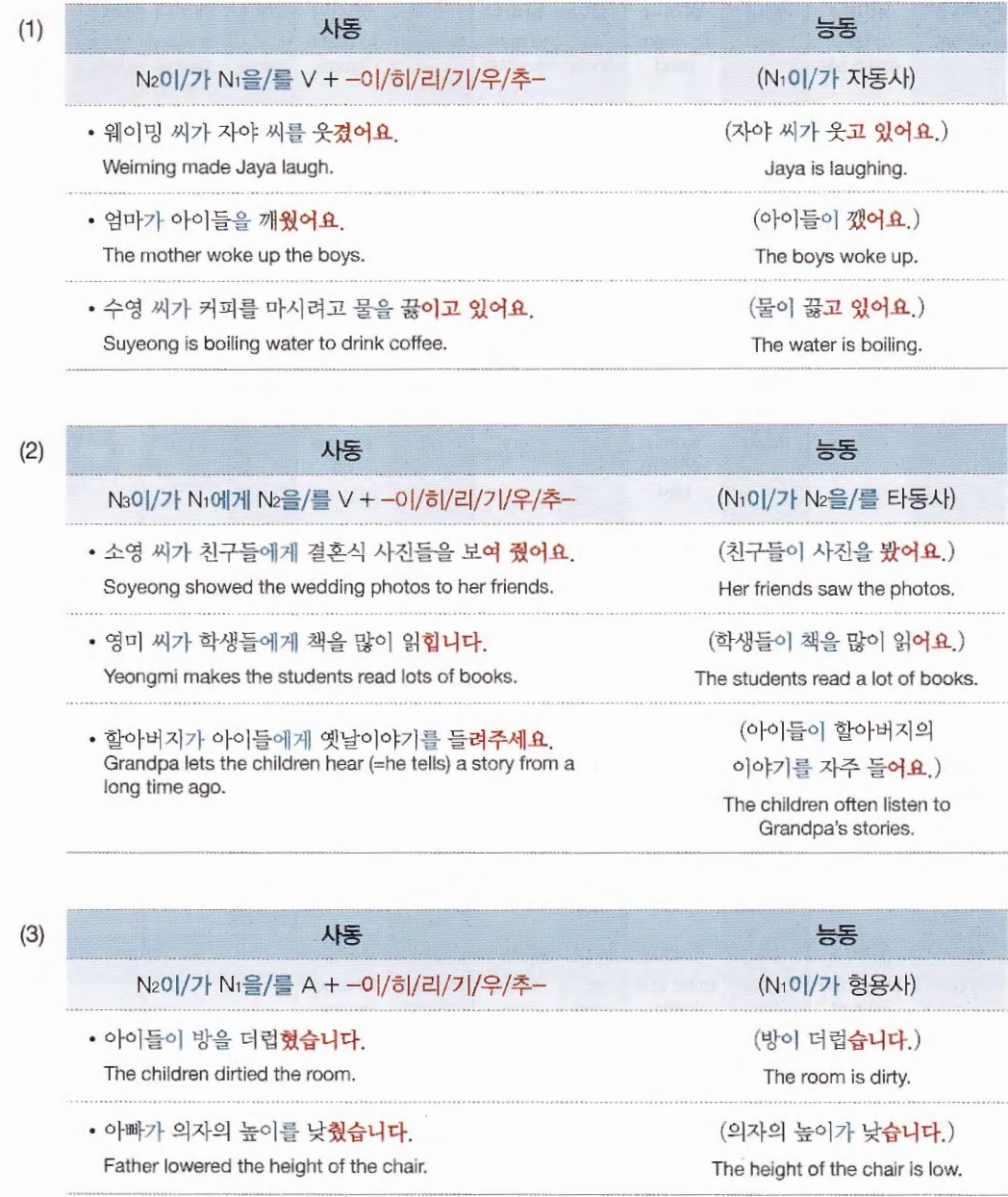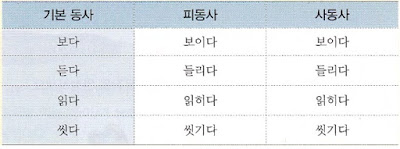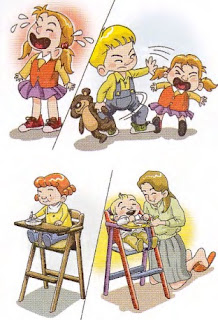가: 진주가왜울어요?
Why is Jinju crying?
나: 오빠가 진주를 울렸거든요.
Her big brother made her (Jinju) cry.
가: 아기가밥을먹습니다.
The baby eats.
나: 어머니가 아기에게 밥을 먹입니다.
The mother makes the baby eat.
This expression means that the subject makes a person(s), animal(s), object(s), or other similar things do something or come to a certain state. This form is made by adding -이/히/리/기/우/추- to the stems of some verbs and adjectives.
 The most common causative verbs are as follows.
The most common causative verbs are as follows.

Causative expressions are formed in the following ways. The action or intransitive, forms of verbs given in the sentences on the right are changed to the appropriate causative forms in the sentences on the left.

1. The passive and causative forms of some verbs are identical, so these verbs must be differentiated by the contexts in which they are used.
• 이 책은 많은 사람들에게 읽혔습니다. – 피동사
This book has been read by many people. – Passive
• 선생님은 영수에게 책을 읽혔습니다. – 사동사
The teacher made Yeongsu read the book, – Causative
• 우리 방에서는 비다가 보입니다. – 피동사
The ocean can be seen from our room. – Passive
• 친구에게 남자 친구 사진을 보여 주었습니다. – 사동사
I let a friend see a picture of my boyfriend. -Causative
Some of the most commonly used verbs with identical passive and causative forms are given below.

-게 하다
>> Full of Intermediate grammar: Click here

